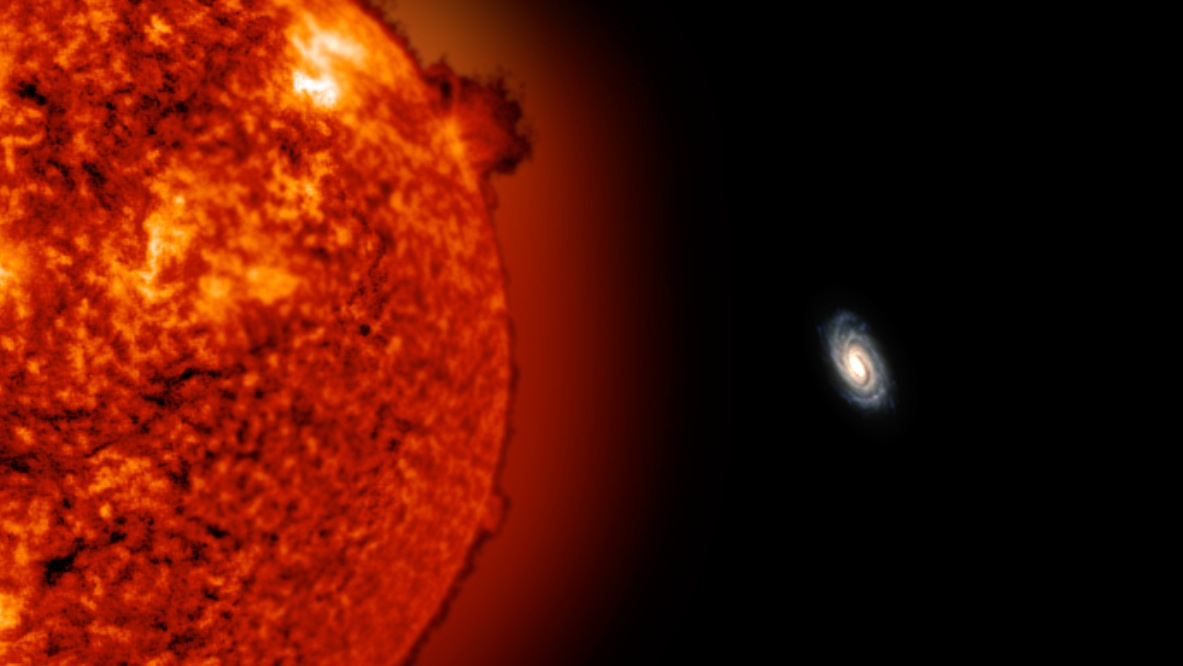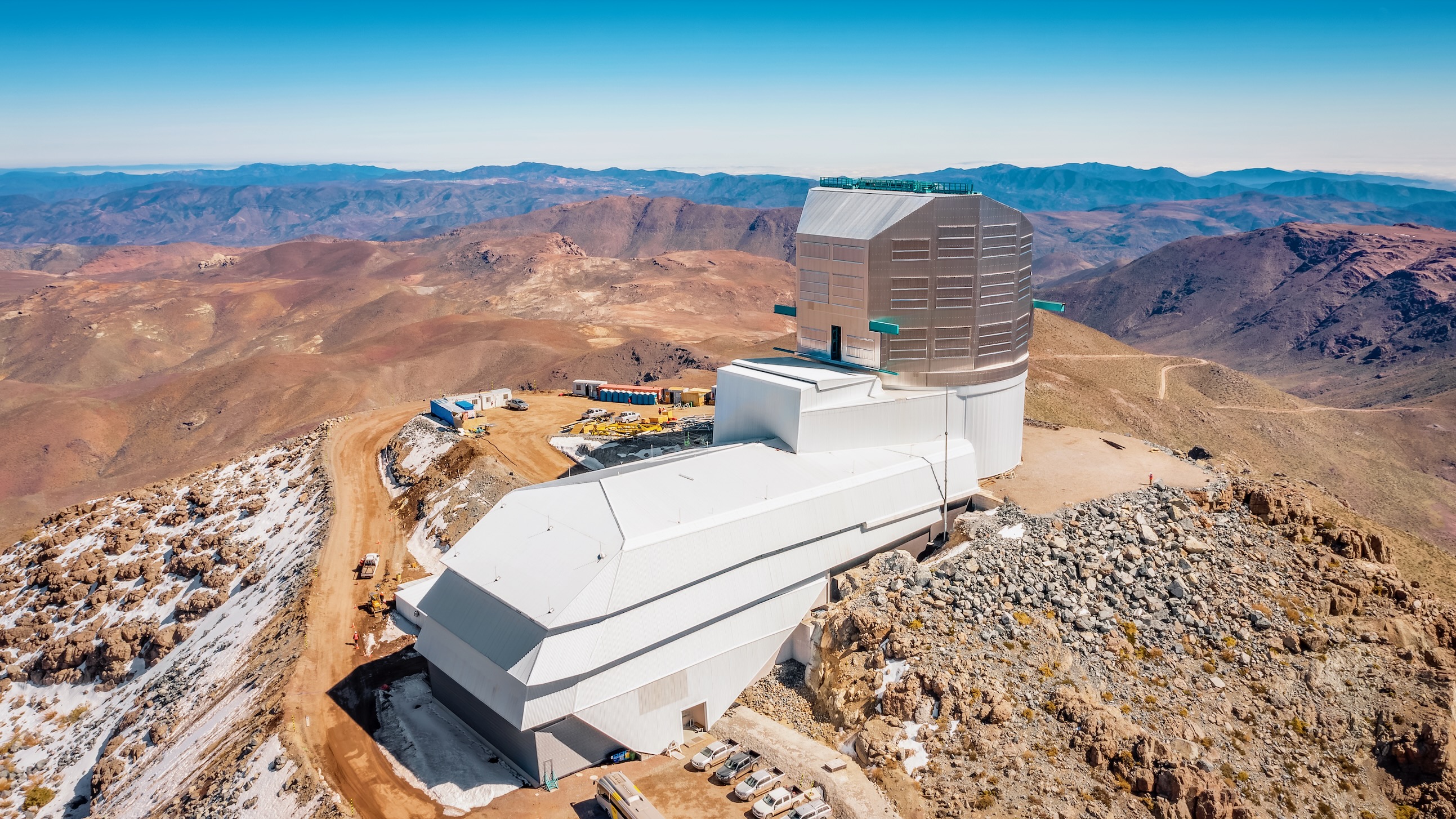What is a light-year?
Light-years make measuring astronomical distances much more manageable.

A light-year is a measurement of distance and not time (as the name might imply). A light-year is the distance a beam of light travels in a single Earth year, which equates to approximately 6 trillion miles (9.7 trillion kilometers).
On the scale of the universe, measuring distances in miles or kilometers is cumbersome given the exceedingly large numbers being discussed. It is much simpler for astronomers to measure the distances of stars from us in the time it takes for light to travel that expanse. For example, the nearest star to our sun, Proxima Centauri, is 4.2 light-years away, meaning the light we see from the star takes a little over four years to reach us.
How far is a light-year?
The speed of light is constant throughout the universe and is known to high precision. In a vacuum, light travels at 670,616,629 mph (1,079,252,849 km/h). To find the distance of a light-year, you multiply this speed by the number of hours in a year (8,766). The result: One light-year equals 5,878,625,370,000 miles (9.5 trillion km). At first glance, this may seem like an extreme distance, but the enormous scale of the universe dwarfs this length. One estimate puts the diameter of the known universe at 28 billion light-years in diameter.
Why use light-years?
Measuring in miles or kilometers at an astronomical scale is impractical given the scale of figures being used. Starting in our cosmic neighborhood, the closest star-forming region to us, the Orion Nebula, is a short 7,861,000,000,000,000 miles away, or expressed in light-years, 1,300 light-years away. The center of our galaxy is about 27,000 light-years away. The nearest spiral galaxy to ours, the Andromeda galaxy, is 2.5 million light-years away. Some of the most distant galaxies we can see are billions of light-years from us. The galaxy GN-z11 is thought to be the farthest detectable galaxy from Earth at 13.4 billion light-years away.
Like degrees, the light-year can also be broken down into smaller units of light-hours, light-minutes or light-seconds. For instance, the sun is more than 8 light-minutes from Earth, while the moon is just over a light-second away. Scientists use these terms when talking about communications with deep-space satellites or rovers. Because of the finite speed of light, it can take more than 20 minutes to send a signal to the Curiosity rover on Mars.
Measuring in light-years also allows astronomers to determine how far back in time they are viewing. Because light takes time to travel to our eyes, everything we view in the night sky has already happened. In other words, when you observe something 1 light-year away, you see it as it appeared exactly one year ago. We see the Andromeda galaxy as it appeared 2.5 million years ago. The most distant object we can see, the cosmic microwave background, is also our oldest view of the universe, occurring just after the Big Bang some 13.8 billion years ago.

Alternatives to light-years
Astronomers also use parsecs as an alternative to the light-year. Short for parallax-second, a parsec comes from the use of triangulation to determine the distance of stars. To be more specific, it is the distance to a star whose apparent position shifts by 1 arcsecond (1/3,600 of a degree) in the sky after Earth orbits halfway around the sun. One arcsecond is equal to 3.26 light-years.
Whether it's light-years or parsecs, astronomers will continue to use both to measure distances in our expansive and grand universe.
Additional resources:
- Watch astronomer Paul Sutter's "We Don't Planet" Episode 9: The Cosmic Distance Ladder.
- Learn more about how astronomers measure the universe, from the International Astronomical Union.
- Watch "Powers of Ten" (1977), which gives perspective on the size of the universe.
Join our Space Forums to keep talking space on the latest missions, night sky and more! And if you have a news tip, correction or comment, let us know at: community@space.com.
Breaking space news, the latest updates on rocket launches, skywatching events and more!
Tim Childers was a freelance science journalist with a background in physics and science communication. He studied Physics at the University of Colorado Boulder, with his research focused on modeling the dynamics of the accretion disks surrounding black holes. He then went on to do an internship at the NASA Goddard Space Flight Center using his film talents to create videos, news stories, and interviews. Nowadays, Tim is an exceptionally curious data scientist who loves using data to tell stories to a diverse audience.
